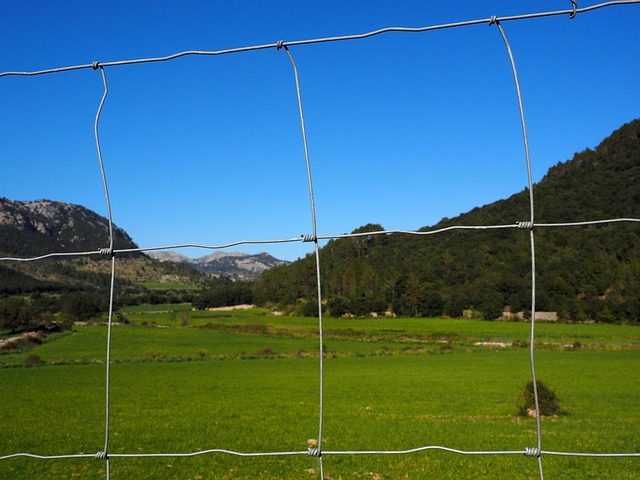Fences serve as both functional and aesthetic elements in our outdoor spaces, and proper care ensures they remain beautiful and durable. This article guides you through the process of fence staining and sealing, crucial steps to protect your wooden fences from the elements. From understanding the benefits and techniques of staining to choosing the right product and maintaining your finished work, learn how to transform and preserve your fence for years to come.
- Understanding Fence Staining: Benefits and Techniques
- Choosing the Right Stain for Your Wooden Fence
- Step-by-Step Guide to Effective Fence Sealing
- Maintaining Your Stained and Sealed Fence
Understanding Fence Staining: Benefits and Techniques
Fence staining is an excellent way to enhance the appearance and protect your wooden fence. It involves applying a coloured finish to the wood, which can transform its look while also providing several practical advantages. The primary benefit is increased durability; stains act as a barrier against elements like rain, sun, and extreme temperatures, slowing down the deterioration process of the fence. Over time, this helps extend the life of your fence, saving you money on repairs or replacements.
There are various techniques for fence staining, each offering unique advantages. One common method is brush application, suitable for small areas or intricate designs. For larger surfaces, a roller or sprayer can apply the stain more efficiently. This process allows for better coverage and quicker drying time. Some stains also offer a ‘one-coat’ option, making it quick and straightforward to achieve a vibrant, new look for your fence.
Choosing the Right Stain for Your Wooden Fence
When it comes to enhancing your wooden fence with stain, selecting the perfect one is a crucial first step. Different stains offer various levels of protection and aesthetic appeal. Water-based stains are popular for their low odor and quick drying time, making them ideal for areas prone to moisture. These stains also provide good color retention but may not be as durable against UV exposure compared to oil-based options.
Oil-based stains, on the other hand, offer superior protection against the elements, including UV rays, mold, and mildew. They create a thick, protective barrier that can last for years. However, they tend to have a stronger odor and take longer to dry. For a more subtle, natural look, transparent or semi-transparent stains allow the wood grain to shine through while still providing some protection. Semi-solid or solid stains offer richer colors but may mask the wood’s natural beauty.
Step-by-Step Guide to Effective Fence Sealing
To ensure your wooden fence stays in top condition, effective sealing is a must. Here’s a step-by-step guide to help you through the process:
1. Prep Your Fence: Begin by cleaning the fence thoroughly. Remove any debris, dirt, or mildew using a pressure washer or a stiff brush. Sanding the fence slightly can also help remove rough spots and ensure better adhesion for the sealer. Allow the fence to dry completely before proceeding.
2. Choose the Right Sealer: Select a high-quality water-based sealant designed specifically for wooden fences. These are environmentally friendly, easy to apply, and provide good protection against water damage and UV rays. Follow the manufacturer’s instructions on coverage and application method.
3. Apply the Sealer: Using a brush or a roller, evenly apply the sealer to the fence. Start from the top and work your way down, ensuring you cover all surfaces of the wood. For optimal results, maintain a consistent coat thickness. Allow the first layer to dry according to the product’s instructions before adding additional coats for enhanced protection.
Maintaining Your Stained and Sealed Fence
Maintaining your stained and sealed fence is essential to ensure its longevity and aesthetic appeal. Regular cleaning is key; use a soft brush or cloth to remove any dirt, mold, or mildew that might accumulate. Avoid harsh chemicals, as they can strip away the protective seal. A mild soap and water solution is usually sufficient.
After cleaning, re-inspect for any damaged areas or peeling paint. Touch up stains and seals in these spots promptly. This prevents further deterioration and maintains an even, professional finish. Regular maintenance not only preserves the fence’s appearance but also prolongs the life of the stain and seal, saving you from frequent re-staining or replacement costs.
